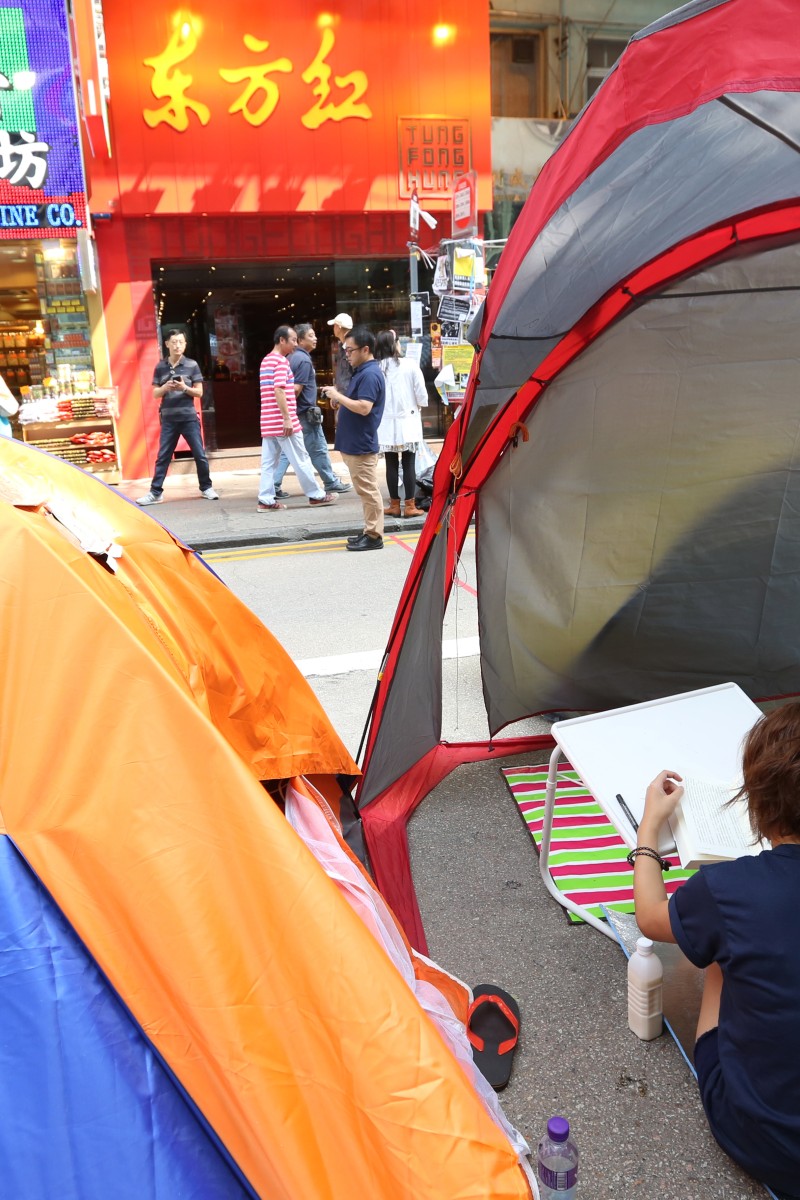 Business as usual for shops and protesters at Occupy Central.
Business as usual for shops and protesters at Occupy Central.Almost as soon as I arrived at the Hong Kong pro-democracy protesters' main camp earlier this month, a young man in a black T-shirt tapped me on the shoulder, smiled, and handed me a bottle of water. "If you're thirsty," he said, and walked away.
This is daily life in Umbrella Square, a sprawl of hundreds of colourful tents beneath a forest of skyscrapers on Gloucester and Harcourt roads, two of the city's most important thoroughfares.
Since September 28, when protesters used umbrellas to shield themselves from police shots of tear gas and pepper spray, the swath of highway has become a high-functioning idealistic community blocked off by a handful of barricades. Volunteers hand out donated biscuits, coffee, toilet paper, face masks and bottled water from well-stocked supply stands along the road. Nearby public toilets have heaps of soap, toothpaste, and shampoo/conditioner combos. Some tents are privately owned; others can be rented. Protesters compost their banana peels, let them ferment, and use the resulting vinegar as a cleaning agent.
Step into the protest zone via especially made stairs crossing over the cement road divider, and the overwhelming feeling is one of entering an art fair, or a music festival - protesters sit on the pavement cross-legged, strumming guitars and checking their smartphones. During the day, tourists amble through the crowd, snapping photos with SLR cameras; at night, hundreds, sometimes thousands of supporters gather to hear speeches and performances.
Many protesters have homes nearby and full-time jobs; they come and go as they please. Others spend their days at the site, contributing to sculptures, posters and banners stating the protesters' demands for a more democratic electoral system.
Most surprising are the rhythms of normal life that survive in the square - the occasional business-suited tent-dweller, or the dozens of students hunched over geometry textbooks at a "study corner" beneath a makeshift tent running along the highway divider. Rows of lamps burn into the night, powered by a donated generator. Volunteer tutors offer help with English and maths. WiFi is available.
"We're waiting for real elections; and weire going to fight until we get them," Christie Wong, a 23-year-old volunteer at the study corner, told me early last week. "We canit just give up; if we leave now, we might never get another chance."
The Guardian
